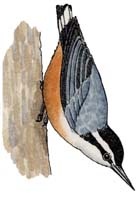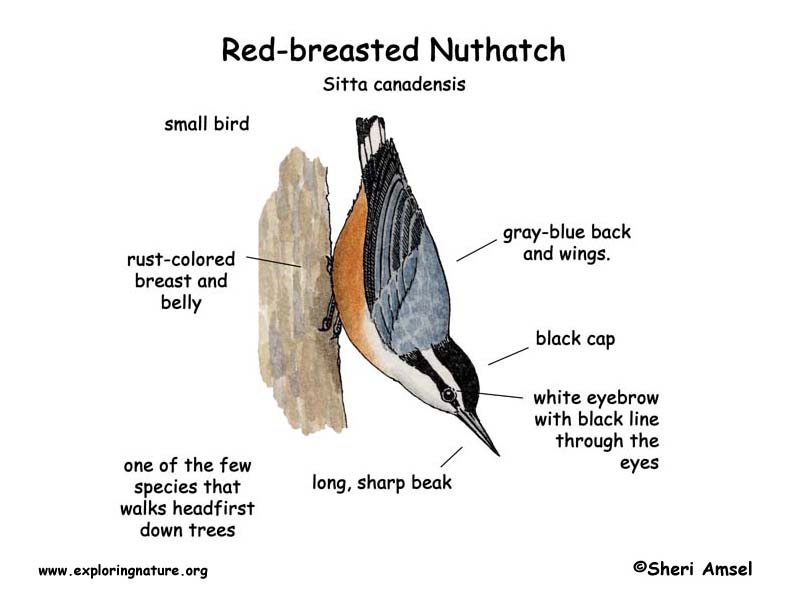

They are found in southern Alaska across Canada south to northern U.S. They have also been found in the south in the Appalachian Mountains and out west in the Rockies. They spend the winter in their breeding range except for the very furthest north areas.
They live in coniferous forests and yards with conifers in them.
They are a small bird with a black cap and a gray-blue back and wings. They have a rust-colored breast and belly and a black line through their eyes from the beak backwards.
They can be seen all winter. They creep down trees headfirst.
They eat conifer seeds and small insects. They come to bird feeders and also eat, spiders, and conifer seeds.
They build their nest in tree holes. Nests are made of grass, bark strips, and pine needles and lined with fur, feathers, grass, and bits of bark. Female lays 5 – 6 white eggs with reddish spots.
Kingdom: Animalia
Phylum: Chordata
Subphylum: Vertebrata
Class: Aves
Order: Passeriformes
Family: Sittidae
Genus: Sitta
Species: S. canadensis
When you research information you must cite the reference. Citing for websites is different from citing from books, magazines and periodicals. The style of citing shown here is from the MLA Style Citations (Modern Language Association).
When citing a WEBSITE the general format is as follows.
Author Last Name, First Name(s). "Title: Subtitle of Part of Web Page, if appropriate." Title: Subtitle: Section of Page if appropriate. Sponsoring/Publishing Agency, If Given. Additional significant descriptive information. Date of Electronic Publication or other Date, such as Last Updated. Day Month Year of access < URL >.
Amsel, Sheri. "Nuthatch (Red-breasted)" Exploring Nature Educational Resource ©2005-2024. December 13, 2024
< http://exploringnature.org/db/view/156 >

